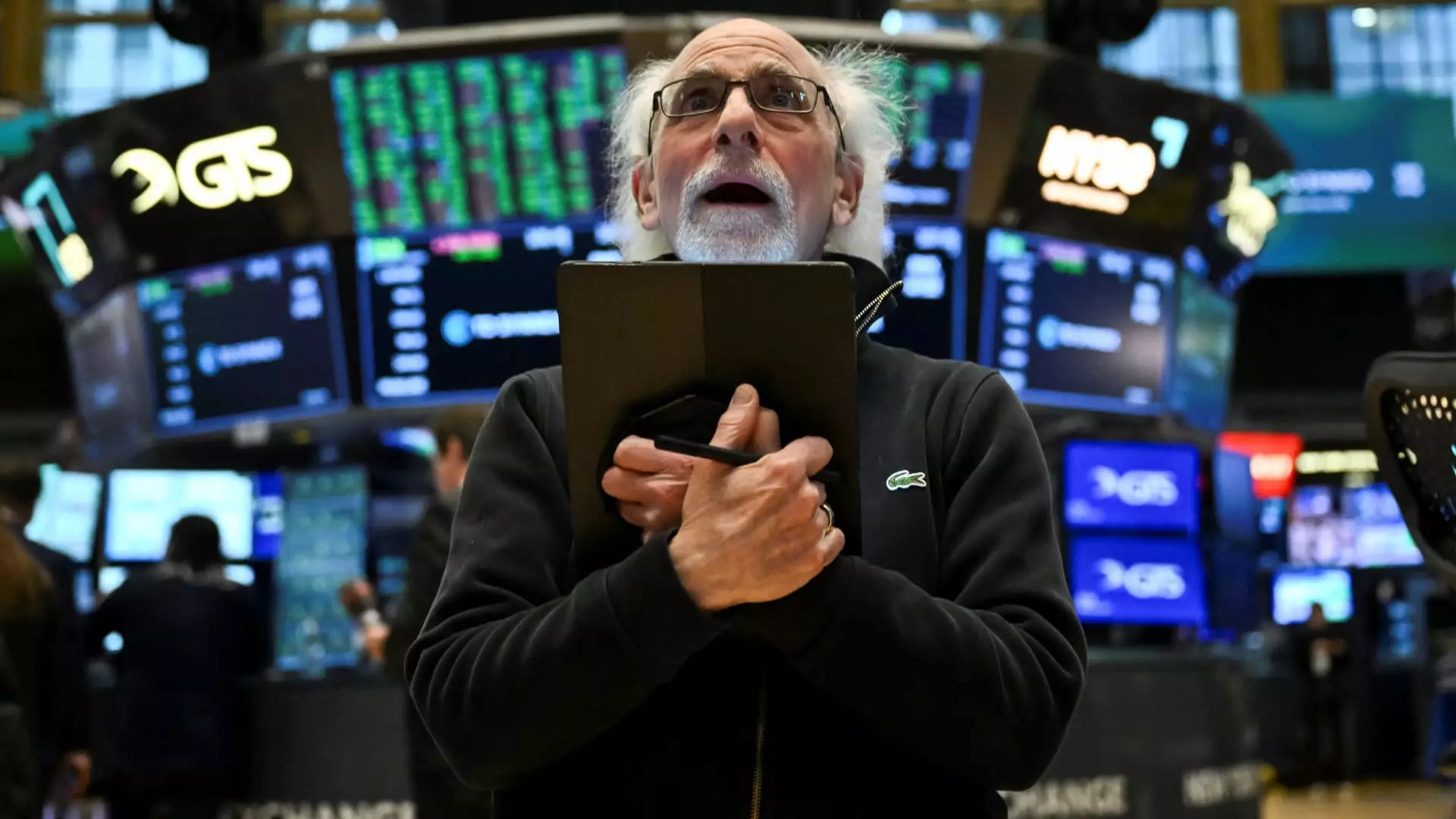In the complex world of financial trading, few strategies evoke as much intrigue and controversy as short selling. This practice, which involves betting against a company’s stock, allows traders to profit when prices fall. However, the potential for catastrophic losses lurks just beneath the surface. Take, for instance, the recent uproar in the markets sparked by a dramatic compression of short positions. Traders who had piled on bearish bets against U.S. equities were blindsided when stocks rallied unexpectedly, charting a spectacular rise that made history—an event that would have colossal implications for them.
Short selling is based on a dubious premise: that one can predict market downturns. In theory, hedge funds borrow stocks to sell at high prices, intending to buy them back at a lower price. When a stock price rises rather than falls, short sellers are squeezed into rapid buybacks to mitigate losses, prompting a sudden uptick in price—thus, the term “short squeeze.” This was particularly evident during the recent surge, when the S&P 500 experienced its third-largest gain since World War II. It’s aclassic example of how the financial markets can turn into a whirlwind of emotions, driven by irrational behavior.
The Psychology Behind Market Movements
What transpired is a case study in the human psyche’s relationship with money, fear, and greed. Traders swallowed hard as they watched a 12.5% spike in the most shorted stocks—a surge so ferocious that it became a testament to the volatile emotions involved in investing. Jeff Kilburg, CEO of KKM Financial, sums up the ripple effects: “When you see someone short covering, the exit doors become so small because of these crowded trades.” It’s a powerful reminder of how quickly the tides can turn in the financial markets, showcasing the psychological toll that high-stakes trading can exert on those who gamble on the downturn.
On the flip side, there were genuine investors making strategic purchases, especially in the tech sector. Yet, the sheer scale of buying driven by short sellers scrambling to cover their positions cannot be understated. Analysts referred to the phenomenon as “pain on the short side,” capturing the ordeal traders face when sudden shifts occur. The fear of missing out competes with the primal instinct to protect one’s capital, and this internal battlefield feeds into the chaotic dynamic that defines the stock market.
The Role of Market Liquidity
Another critical factor that played into this episode was thin market liquidity. With stock futures contracts being accessible to trade at minimal volumes, markets become increasingly susceptible to exaggerated price swings. Goldman Sachs noted an all-time low in trading volumes, leading to the kind of abrupt movements that can wipe out millions in seconds. This trend towards lower liquidity is troublesome; it indicates a market on edge, ready to explode into volatility at a moment’s notice.
Furthermore, while traders endured this whirlpool of emotions and rapid trades, the economic underpinnings were not forgotten. Analysts warned of the additional hurdles imposed by existing national trade policies, particularly the heavy tariffs with China. As investors began to take stock of the looming uncertainties, the optimism felt on that electrifying Wednesday began to dwindle, replaced by a cautious acknowledgment of the fragility of economic conditions.
Looking Ahead: The Impending Uncertainty
What follows such a significant rally? For traders who remained wedded to their original short positions, the outlook is concerning. There’s evidence to suggest that a sizable number of shorts still lurk in the market. In the aftermath of a dramatic market shift, some analysts posit that short covering remains an ongoing process. Bank of America stated unequivocally that “the market can’t de-risk a short in less than 3 hours,” painting a grim picture for those still holding onto their bearish strategies.
This persistent uncertainty brings to light the delicate equilibrium between optimism and pessimism that defines market behavior. As conversations on trading floors shift, the collective sentiment is tinged with anxiety. Relationship dynamics within Wall Street are ever-shifting, revealing both the voraciousness and vulnerability of its players. What transpired is not merely a single event—it’s a flashpoint that exposes the weaknesses of an increasingly twitchy market landscape.
In such uncertain times, traders need to grasp the underlying faults that give rise to phenomena like short squeezes. The proverbial roulette wheel of stock trading is not merely a game of chance—it’s a reflection of deeper societal emotions, the interplay between confidence and fear shaping our economic landscape. Each surge and plummet in share prices tells a story, one that is all too human, reflecting our collective struggles, aspirations, and the unpredictable nature of financial markets.

Leave a Reply